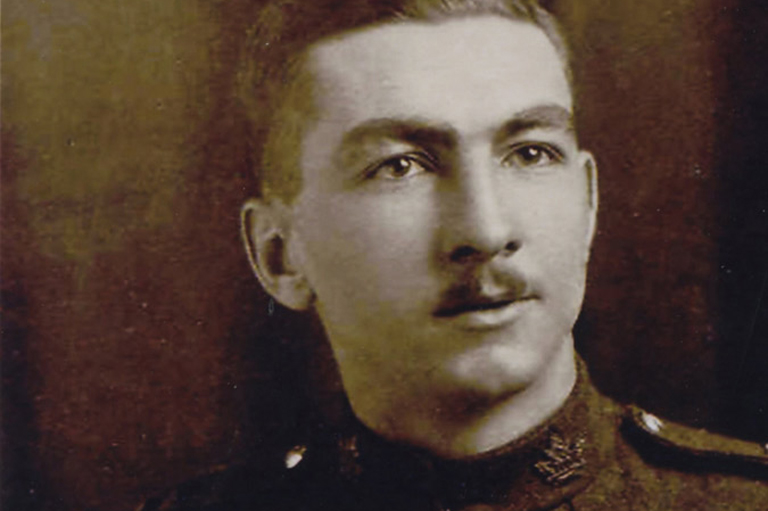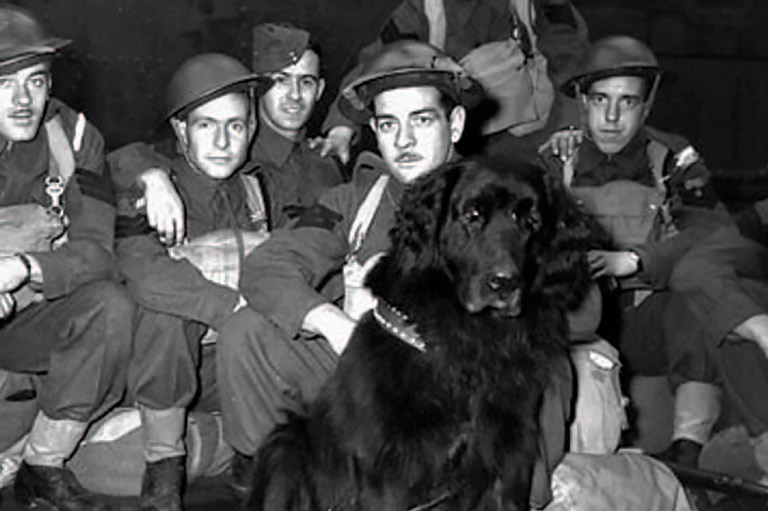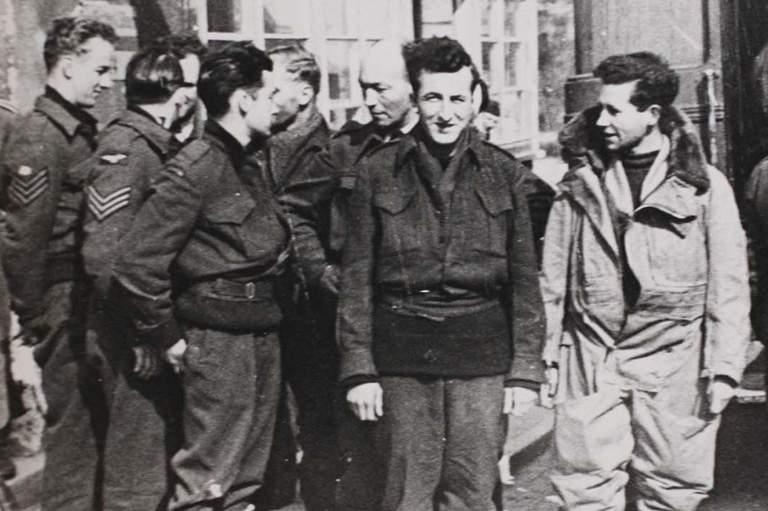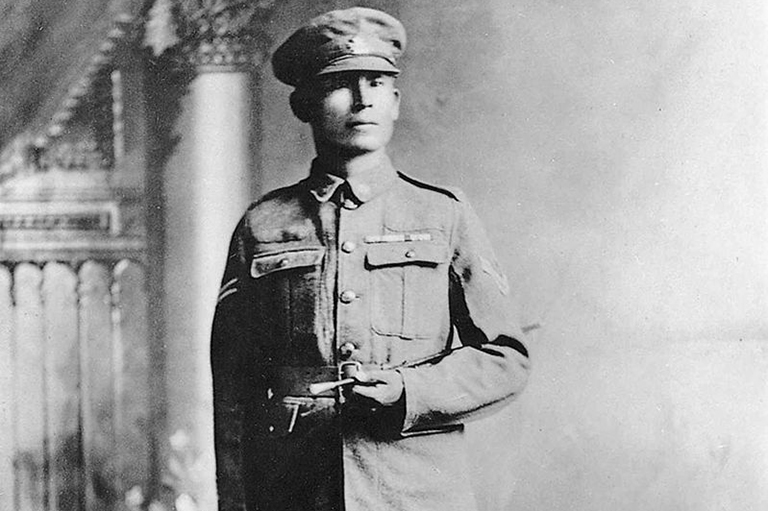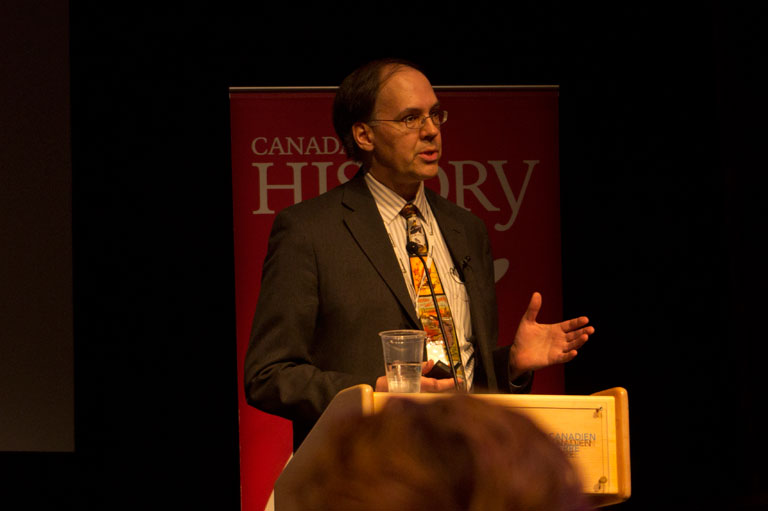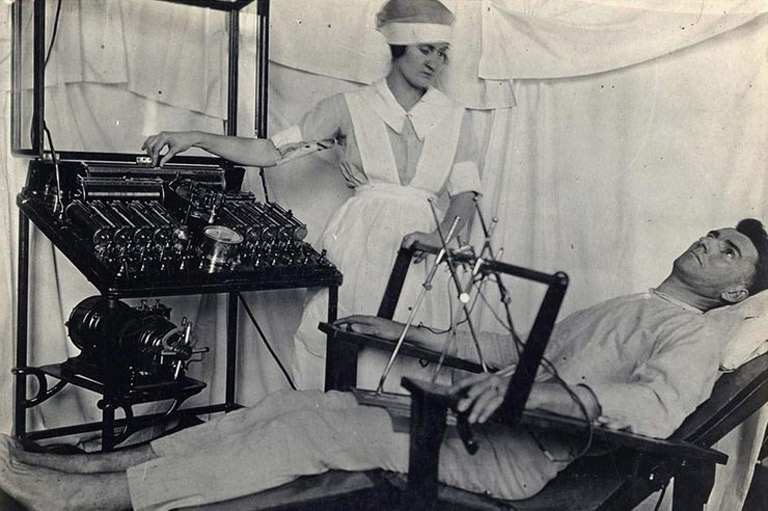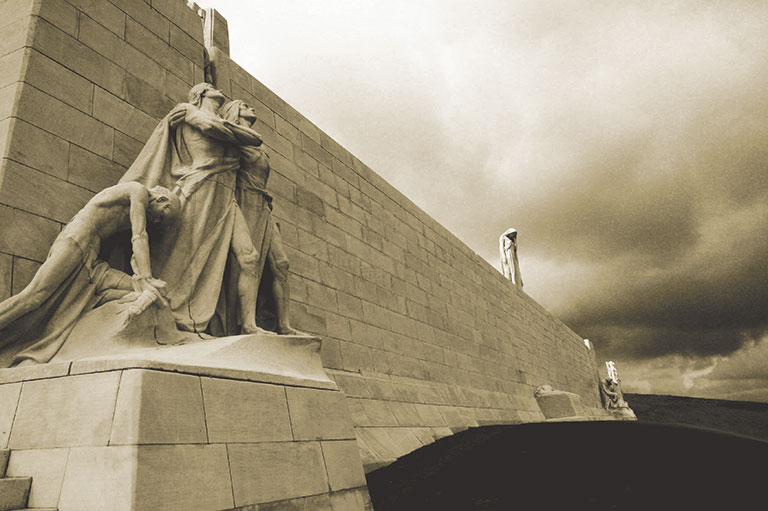Valour Sold
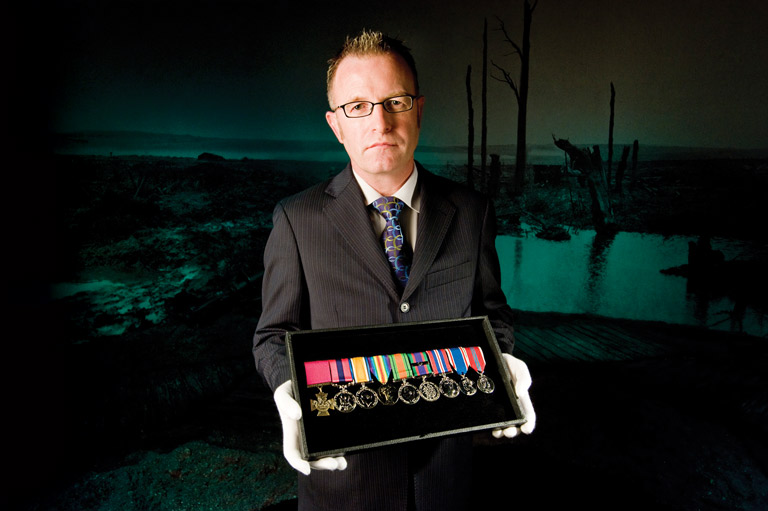
A few bits of cloth and bronze. Taken separately, they’re virtually worthless. Combine them just so — according to specifics set out by Queen Victoria in 1856 — and they transform into something priceless: a Victoria Cross.
Soldiers have fought, and died, while winning them. Collectors have paid small fortunes to acquire them, and thieves have stopped at nothing to steal them. In truth, the Victoria Cross is greater than the sum of its parts — it’s the most prized commodity in a lucrative, and controversial, worldwide trade in war medals.
Last spring, the venerable VC became the focus of a national controversy when one of Canada’s most famous crosses was put up for auction. The medal belonged to Robert Shankland, one of three Victoria Cross recipients who lived on Winnipeg’s famed Valour Road.
The thought of a cherished symbol of Canadian courage being sold to the highest bidder angered many. On radio call-in shows, in online forums, and in newspapers, Canadians weighed in. “Medals are not currency,” cried a headline in the Toronto Sun. “Conflict expected as Victoria Cross set to be auctioned,” blared the National Post.
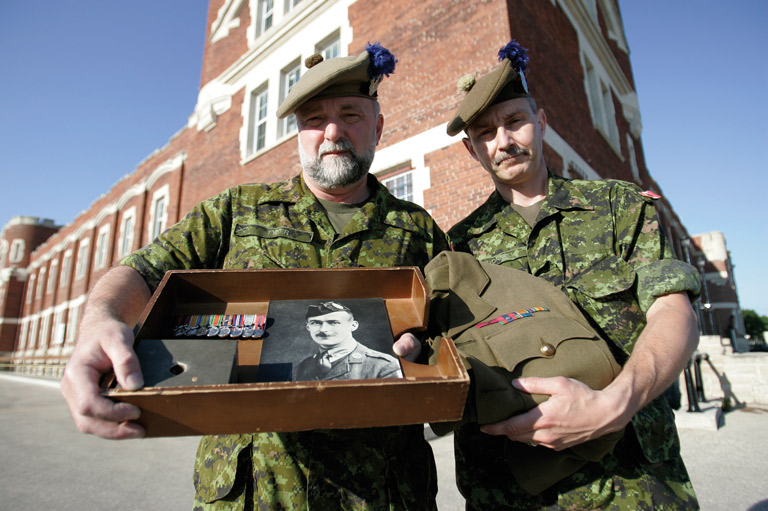
The Victoria Cross, a relic from an almost-forgotten age, was suddenly on the radar. Soon, questions were flying: Why do people sell valour medals? Who is buying them? Should the federal government ban their sale? And if not, does Ottawa have an obligation — moral or otherwise — to keep the Victoria Cross in Canada, regardless of the cost?
It’s early May 2009, and the snow has finally melted from the grounds of Winnipeg’s Minto Armoury.
Located a few blocks from Valour Road, the squat brick building is home to the regimental museum of the Queen’s Own Cameron Highlanders of Canada. Open Tuesday and Thursday evenings, the museum is tucked away on the second floor. Heading through the door, you’re greeted by a diorama of a Canadian First World War trench. Antique weapons, including a Ross rifle and a Bren gun, are mounted on a nearby wall. But it’s the small glass case at the back of the cramped room that holds the regiment’s most storied possession: a small tin box with a hole blown through it. The box still holds the fudge it was carrying in 1917.
The box and its sweet, sticky contents likely saved Lieutenant Robert Shankland’s life at the battle of Passchendaele, during which he earned the Victoria Cross. It certainly stopped the German bullet destined for his chest.
Shankland, who was later promoted to lieutenant colonel in World War II, served with the Highlanders, and the museum owns several of his effects — his photos, his uniform, and a miniature set of replica war medals, including a tiny Victoria Cross.
The museum would love to replace the replicas with the real deal. But it will not be among the potential buyers in Toronto on May 25, 2009, to bid on the medals.
Like most small museums in Canada, it doesn’t have the money.
“What can I tell you?” Hugh O’Donnell, a chief warrant officer with the Cameron Highlanders, says. “It’s like standing by at a car accident — you’re just watching what happens. It’s not a good feeling to stand by and watch something of such significance go by the board.”
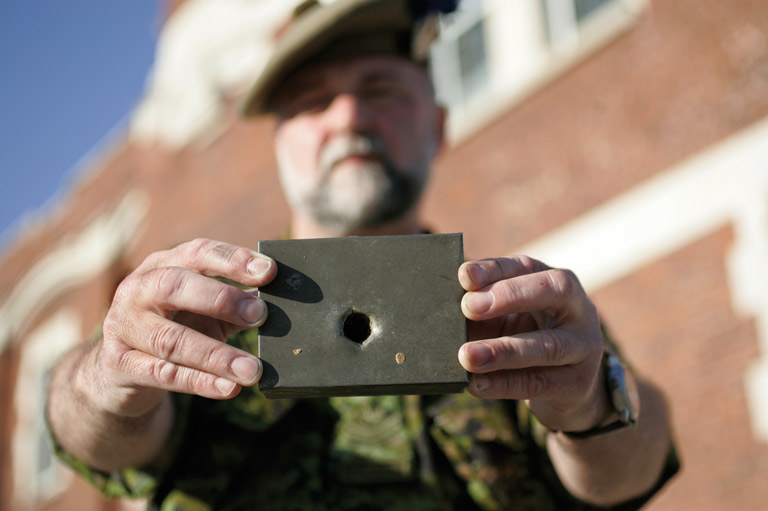
The truth is, only governments — or certain private collectors — can afford the exorbitant sums the medals command.
Case in point: Of the seventy-two Victoria Crosses put up for sale since 1998, forty-five have been snatched up by one British billionaire: Baron Michael Ashcroft. Lord Ashcroft is the sixty-fifth-richest man in Britain. He owns 152 Victoria Crosses, and his Ashcroft Trust VC collection is the largest private grouping of crosses in the world (see Editor’s Note at the end of this story).
Collecting Victoria Crosses is Ashcroft’s passion. In a podcast interview on his personal website, the sixty-three-year-old businessman explains how he has been fascinated by the subject of bravery since he was a schoolboy. In 1986, he bought his first Victoria Cross.
“I can still remember the feeling of exhilaration,” he says. “It’s a tangible relic of a brave act, with no intrinsic value. But yet, there is a surge of electricity when you hold it in your hand and look at it and know the story of the courage behind that little piece of metal.”
Valour medals, unlike campaign or service medals, are specifically awarded for acts of bravery and heroism on the battlefield. That’s what makes them so valuable to collectors.
A couple of weeks before the Shankland auction, Ashcroft’s personal medals curator, Michael Naxton, agrees to chat about the upcoming sale. Naxton is a former medals evaluator for Sotheby’s auction house in London, England. He says he plans to meet with Ashcroft on the coming Thursday to discuss whether they should attempt to buy Shankland’s VC.
“We might put in a bid,” he says with a refined British accent. “I don’t know yet. Nothing has been decided — but we are well aware that if we were to put in a bid, there could be great problems. To get it out [of Canada] might prove so complicated and so controversial, maybe Lord Ashcroft won’t put in a bid.”
Ashcroft sees himself as the unofficial protector of the VC, and of the stories of the men who have won them. Not everyone agrees.
“There are groups of people who hold wildly different views about whether or not these medals should or should not be sold. Those views are never going to be reconciled,” Naxton says.
“To the people who say that medals should never be sold: What about the poor, penniless widow of an ordinary soldier killed while winning the Victoria Cross? Why shouldn’t she sell it, in order to make sure her children have food on the table and shoes on their feet?”
If Queen Victoria were alive today, she would not be amused to see her namesake medal transformed into a commodity for collectors.
Victoria created the VC in 1856, in the wake of the Crimean War. Until then, valour medals had traditionally gone to officers, not enlisted men. These were generally men from well-to-do families who would never consider selling their war medals — and likely didn’t need the money.
The VC, though, was created to be blind to rank or status. By the time of the Great War, it was increasingly the common foot soldier in the trenches who was receiving the VC. And, as time went on, more crosses began appearing for sale on the open market.
According to the British website VictoriaCross.org.uk, seventy-two VCs have been put up for auction since 1998, netting at least $11.2 million. (Seven were sold for undisclosed amounts.)
The highest price paid during this period was approximately $765,000, for a VC earned by Australian WWI veteran Captain Alfred Shout. The lowest was $1,400 for a replacement issued to English Able Seaman George Hinckley, who earned the original in 1862 during the Second China War.
Due to its connection to Winnipeg’s Valour Road — VC recipients Corporal Leonard Clarke and Company Sergeant-Major Frederick William Hall also lived on this street — the medal set that includes Shankland’s VC is valued between $220,000 and $330,000.
“It’s real money,” says Jack Granatstein, the military historian and former director general and CEO of the Canadian War Museum in Ottawa. “It’s basically the [annual] acquisition budget for most large museums in Canada.”
Granatstein has no issues with veterans who sell their medals — but he does see the value in keeping valour medals in Canada.
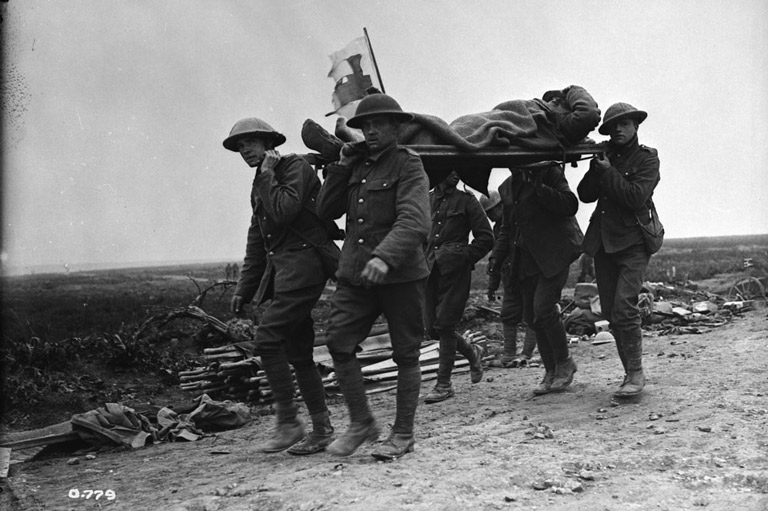
One way to ensure this happens is to ban their sale. This has been done elsewhere. For instance, the United States bans the sale of its highest award for military valour, the Medal of Honor. In 2005, the U.S. Stolen Valor Act also made it illegal to impersonate a medal recipient, or wear another recipient’s award. Violators can face up to a year’s imprisonment and a six-figure fine.
In Canada, NDP MP Peter Stoffer has been working for ten years to get similar legislation passed. His private member’s bill, C-208, would make it illegal to sell a Canadian military or police medal.
With the date of the Shankland auction approaching, Stoffer, the NDP’s veterans affairs critic, reintroduces his bill in the House of Commons. He’s backed by the Royal Canadian Legion.
“Some people believe it’s their medal, and they can do what they want with it,” says Legion spokesman Bob Butt. “We look at it as a memorial [to the person who earned the medal].”
As the controversy surrounding the auction heats up, Veterans Affairs Minister Greg Thompson responds by promising to do “whatever it takes” to keep the medals in the country. Despite this vow, uneasiness remains. There’s a growing feeling that Shankland’s medals will in fact be spirited out of Canada by an outsider.
After tense weeks of waiting, the May 25 auction arrives.
On the day of the sale, Stoffer issues a statement: “This is a sad day in Canada because World War I hero Robert Shankland’s medals are for sale. Today we will lose a significant part of our collective history. It is a loss to all Canadians and could have been prevented.”
In Toronto, medal collectors, history buffs, and others gather at Bonhams Canada auction house at 55 Hazelton Lanes to witness the historic auction. The sellers are not disclosed, but they’re believed to be members of his family. Bidding begins on Lot No. 27 — the Shankland medal set. Across the country, many Canadians hold their breath. Will Lord Ashcroft add another bauble to his collection?
The gavel drops. The auctioneer cries out, “Sold!”
The bid: $288,000.
The buyer: The Canadian War Museum in Ottawa.
Reached a few days after the sale, the War Museum’s general director, Mark O’Neill, is still beaming. For weeks, he reveals, the War Museum had been working behind the scenes to prepare its bid.
“We had to move very, very quickly and very, very quietly,” O’Neill says. “Time was of the essence.” While the debate raged in the media, officials at the museum had sought to avoid the spotlight. “All it does, frankly, is drive up the price,” he says.
In Winnipeg, the result of the auction is greeted with joy from the members of the Queen’s Own Cameron Highlanders.
“All’s well that ends well,” says O’Donnell, the chief warrant officer.
“It really is a relief,” adds Murray Burt, the secretary of the regiment’s advisory board.
“The Victoria Cross is a national jewel. I was happy to see it go to the War Museum.”
To purchase Shankland’s medals, the War Museum tapped its $1.5-million National Collection Fund, which is specifically for acquisitions. It’s a bankroll that many smaller museums across Canada would love to have.
“There are very few institutions in this country … that have the capacity of purchasing power to make this kind of purchase,” O’Neill says. “Happily, for us, it’s not an either-or situation. The most important thing was to make sure that some institution in Canada was able to acquire the medal set — and we’ve done that for Canadians.”
With the Shankland purchase, the War Museum now has thirty-one Canadian Victoria Crosses in its collection. According to the Department of Canadian Heritage, they are among the sixty-five VCs held in public collections in Canada. Another eight Canadian crosses are part of public collections in England.
Of the twenty-three not held by the public, two were stolen in the 1970s and their whereabouts are unknown, while twenty-one VCs are held by private collectors or family members of the recipients.
What will become of these medals? Will the War Museum always be able to ride to the rescue if they’re put up for auction?
It turns out the War Museum wasn’t the only institution secretly working to secure the Shankland medals.
Murray Burt says the Highlanders had quietly been lining up philanthropists to contribute to a matching bid for the medals if they had been sold to a foreign buyer.
“There was no way we were going to dash in and try to bid on the first bidding. It would have been foolhardy,” Burt says. “But we couldn’t just let it go without a fight.”
Under the federal Cultural Property Export and Import Act, foreign buyers of “culturally significant” items must obtain an export permit before removing them from the country.
The federal government can refuse to grant the permit for up to six months to give recognized Canadian institutions, like the Cameron Highlanders, time to raise money for a matching bid — which, under the act, the foreign buyer must then accept, says Dominique Collin, spokeswoman for Canadian Heritage.
There are other regulatory protections in place. For instance, the federal Movable Cultural Property Program offers funding for approved institutions to help purchase significant items. The program has been used twice since 1997 to keep Victoria Crosses in Canada. Ottawa also offers tax incentives to Canadians who donate war medals to museums.
These programs, aimed at keeping war medals in Canada, raise the question: Is there something inherently wrong with allowing valour medals to fall into the hands of private collectors?
Consider the case of Lord Ashcroft. For years, he endured criticism for hoarding Victoria Crosses. Now he’s being hailed as a hero after announcing an almost $10-million donation to the Imperial War Museum in London to fund a permanent public exhibit of his VC collection.
“Those who criticized [Lord Ashcroft] for having bought so many Victoria Crosses are now being forced, in many cases, to eat their words,” Naxton, the medals curator, says. “[Ashcroft’s exhibit] will be the greatest and most spectacular display of bravery medals the world has ever seen. He has indeed done a great public service.”
And what of small-time collectors? Are they really the black hats in this story?
Floyd Migory, a retiree living in London, Ontario, is the president of the Canadian Society of Military Medals and Insignia, an association founded in 1965 to represent medal dealers and collectors. He points out that collectors often report stolen medals to authorities, and will even try to connect missing medals with the recipients’ families.
And while it’s all well and good to argue medals shouldn’t be sold, “lots of times, there is no more family,” he says. “There’s no wife, no children. The medal is given to the mother … and it’s put in a drawer.”
“As years go by, people are forgotten and it vanishes. People never get to see them. If they’re in the hands of collectors, they’re displayed, researched, and talked about.”
One thing seems certain — as time passes, the value of the Victoria Cross will continue to rise.
Consider these statistics: According to the British National Archives, 633 VCs, plus two bars, were awarded during the First World War. In the Second World War, that figure plummeted to 182, plus one bar. Since World War II, the VC has been handed out just thirteen times.
To put that in perspective, since World War II, more than twenty-six thousand Canadians have fought in Korea. Thousands more have served in various NATO and United Nations peacekeeping missions around the world. And, of course, Canadian troops are still in Afghanistan fighting the Taliban.
In all that time, not a single Canadian combatant has earned a VC.
In fact, the odds of being awarded a Victoria Cross are decreasing daily thanks to the changing nature of warfare in the twenty-first century. Massive battles involving tens of thousands of troops in close combat have all but disappeared. Death for today’s soldiers usually comes courtesy of guided missiles, long-range rifles, or improvised explosive devices (IEDs).
Canada’s last VC recipient, WWII soldier Ernest “Smokey” Smith, died in 2005. His likely are not being replaced.
“It is inevitable these bravery medals will become even rarer as time goes by,” Naxton says. “It’s why it is so important to celebrate the memory of these great heroes of the past — because so few are being created in modern times.”
In the end, the debate over buying and selling war medals is one of priorities. Does owning the actual physical medal help preserve the stories of the men who won them and of the conflicts they fought in? Or are there other ways of passing on the memory of war?
“The question, to me, comes down to what is the best use of $300,000?” says Granatstein, the former War Museum director. “To buy a Victoria Cross? Or to design a major teaching module that can be put online and reach a million kids? People have to decide where they want to put their emphasis.”
It’s now months after the Shankland sale. With the medals safely stored in the War Museum in Ottawa, the public’s attention has turned elsewhere — and it will likely stay elsewhere until the next high-profile Canadian Victoria Cross is sold.
For many of us, the Shankland saga has been an emotional but largely abstract spectacle. Those of us who have never served in the military, nor fought on a field of battle, likely find it difficult to comprehend the depth of passion that surrounds the Victoria Cross and other war medals.
“It’s very difficult to explain what a medal means [to civilians],” agrees Bob Butt, the Legion spokesman. “But once somebody gets one … they will never forget it, I can tell you.”
Is it wrong to sell valour medals? Perhaps it’s simply inevitable.
The words of Floyd Migory, the Ontario medals collector, linger. During a conversation last spring, he said he would never consider selling his family’s war medals.
“But that’s just me,” he added, “and fifty years from now, they will be in somebody else’s hands. We never own anything. We might buy some medals, but we never own them — we’re just holding them for the next guy down the line. Somewhere down the line, everything gets disposed of, one way or the other.”
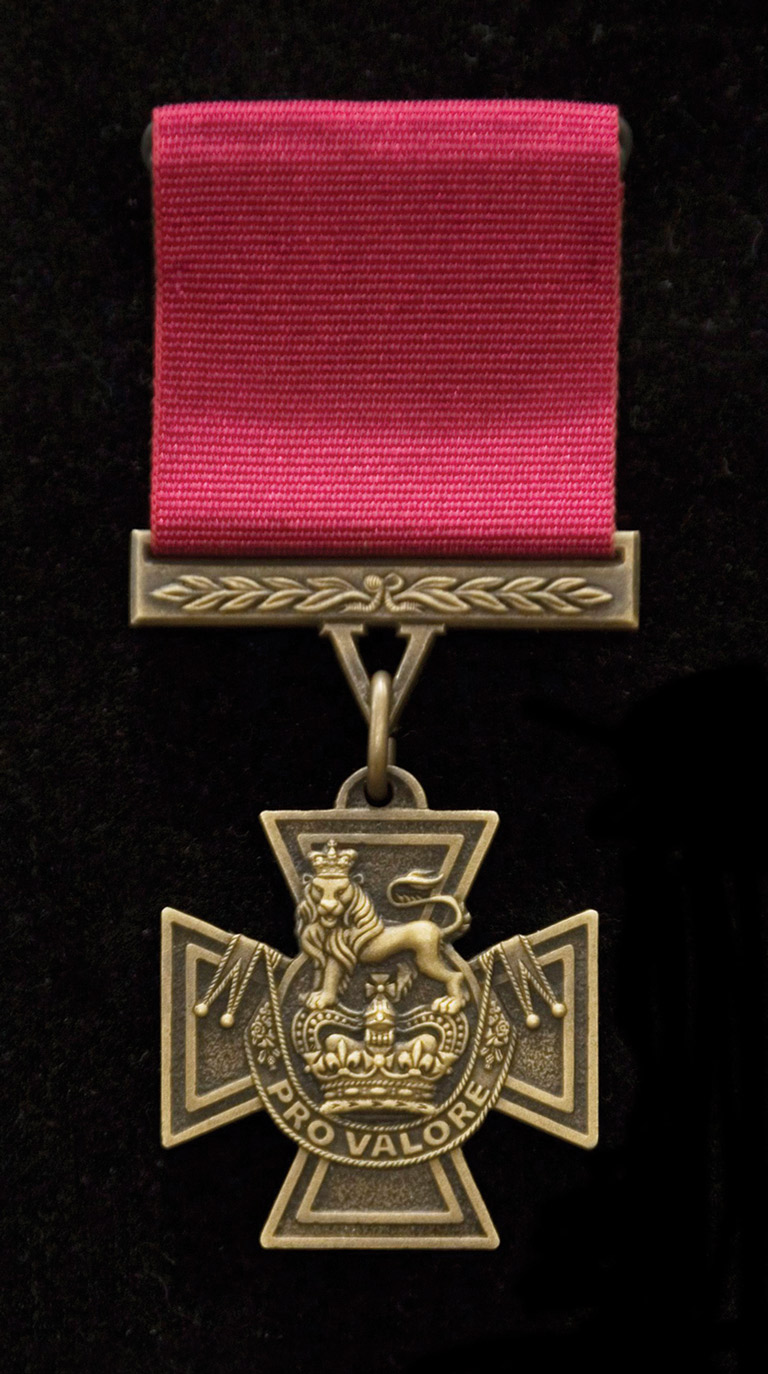
Victoria Cross by the numbers
153
Years since the creation of the Victoria Cross.
62
The number of Victoria Crosses awarded by Queen Victoria on June 26, 1857, the date the medal was first presented.
21
The age of the first Canadian to receive the Victoria Cross, Lieutenant Alexander Roberts Dunn, who earned his medal during the Crimean War’s Battle of Balaklava in 1854.
1,356
The number of Victoria Crosses awarded to date.
96
The number of Canadians awarded the Victoria Cross, including twenty-nine who received it posthumously.
3
The number of countries — Canada, Australia, and New Zealand —that created their own version of the Victoria Cross. To accommodate bilingualism, the inscription “for valour” was replaced with the Latin “pro valore” in the Canadian version.
2008
The year the Canadian version of the Victoria Cross was first unveiled.
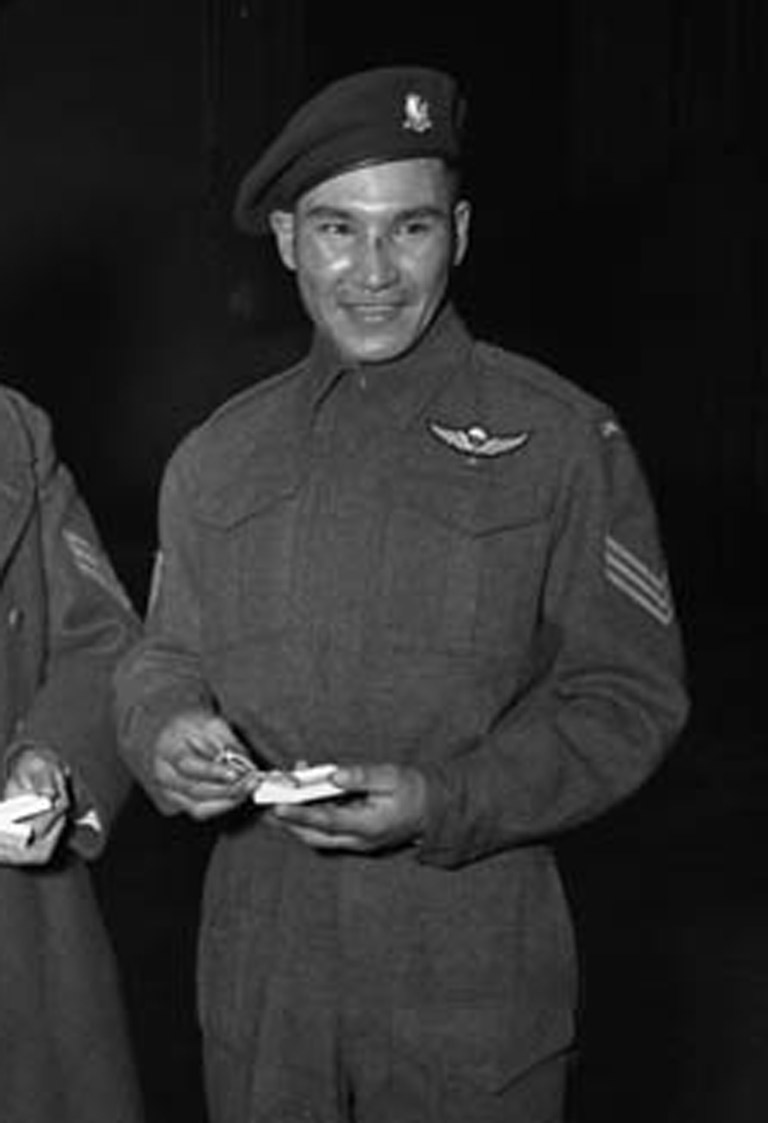
Medals missing in action
People sell war medals for all kinds of reasons. Sometimes it’s greed. Sometimes it’s need. And sometimes we simply don’t know why.
That’s the case for Tommy Prince, Canada’s most decorated aboriginal soldier. A crack shot and expert scout, Prince earned both the Military Medal and the American Silver Star during a 1944 mission with the Devil’s Brigade — the famed Canadian-American World War II commando unit. In all, he received eleven medals during tours in the Second World War and in Korea.
But he struggled after returning to the home front, facing racism and likely suffering from post-traumatic stress disorder. He eventually turned to the bottle and died virtually destitute in 1977. Prince was just sixty-two.
At some point, he parted with his war medals. He likely sold them, although it’s possible one or more had been stolen or lost over the years. “My uncle went through a tremendous amount,” says Jim Bear, Prince’s nephew. “So whatever happened to Tommy in terms of the medals … I can never condemn him for what happened. He needed money at the time — but possibly with hopes he would get [the medals] back at another time.”
In 2001, Prince’s medals came up for auction. By that time, Prince had become a household name, helped in part by a 1999 film, Fallen Hero: The Tommy Prince Story.
When the media announced the looming sale, Bear was determined to repatriate his uncle’s medals and bring them back to Manitoba. He began a campaign to raise the large amount of money he would need.
“I guess what bothers me is the price, that there should be such a gigantic profit for these medals,” Bear says. “The price gets so outrageous, the fella on the street can’t even afford to bid on them.”
Donations poured in. Soon, he found himself in a London, Ontario, auction house, engaged in a tense bidding war.
The final offer was $72,000. Suddenly, the medals were back in Prince’s family. “When we found out we won … I couldn’t talk,” says Bear. “It really hit me, I was just too emotional for words.”
Bear donated the medals to the Manitoba Museum, and says proudly that “they are never to be sold again.
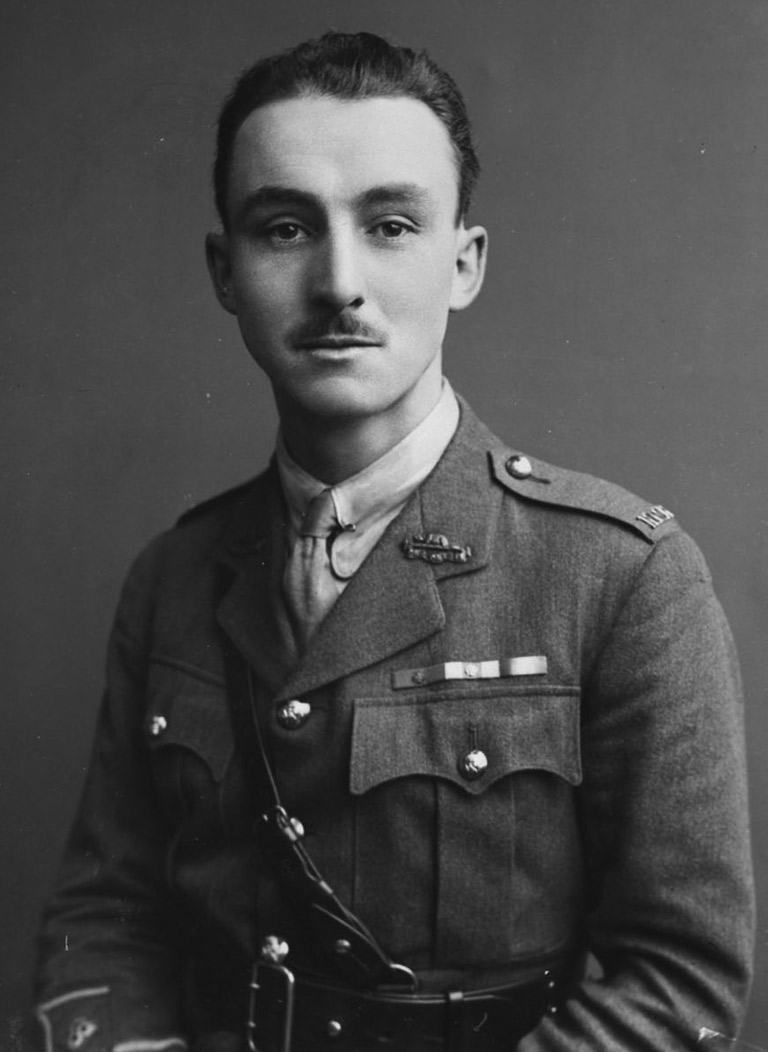
Stolen glory
Valour medals are tempting targets for thieves
It’s Christmas Eve 1979 and all’s quiet at the Royal Canadian Regiment Museum in London, Ontario. The customary rounds of “Season’s greetings!” have been said and the staff members are settled in at home for the annual Christmas break.
A few hardy souls still scramble about the streets on this winter’s night. Most who pass by Wolseley Hall are oblivious to recent additions to the elegant stone building — iron bars on the windows, reinforced locks, and a “burglar-proof” display case. But at least one person knows about these security features — and knows how to get around them.
The security is meant to protect a precious collection of war medals, including a Victoria Cross won in autumn 1918 near Cambrai, France.
Milton Gregg, then a lieutenant, earned this VC while storming a series of German trenches. Twice injured, he personally killed or wounded eleven enemy soldiers, made prisoners of twenty-five more, and captured twelve machine guns. A few days later, he led another courageous assault before being wounded a third time.
As the Commonwealth’s highest medal for valour, any VC is special. But this one carried extra lustre thanks to Gregg’s later achievements: He served in World War II, then spent ten years as a federal MP and cabinet minister, and later held key positions within the United Nations.
Gregg’s extraordinary medal collection was thus a tempting target. That’s why, sometime during the 1979 Christmas holiday, someone broke into the museum, smashed the display case, and swiped the medals.
“It was devastating,” says Claus Breede, the current curator of the RCR museum. “It was almost like stealing the church silver.”
Sadly, this theft is not an isolated case.
Worldwide, at least fifteen stolen Victoria Crosses — including one belonging to another Canadian soldier, Captain Edward Bellew — remain unaccounted for. They’ve been swiped from private homes and public institutions, including, of all places, Coventry Cathedral in England. The Bellew medal was taken sometime between 1975 and 1977 from the Royal Canadian Military Institute in Toronto.
More recently, thieves lifted ninety-six medals, including nine Victoria Crosses, from the Waiouru Army Museum in New Zealand. The total value of the 2007 heist was an estimated C$6.9 million. The medals were recovered in February 2008 after billionaire medal collector Michael Ashcroft posted a NZ$200,000 reward. Lord Ashcroft later offered a further NZ$200,000 for information about the perpetrators. So far, no one has been arrested.
Themes associated with this article
Advertisement
You might also like...

Canada’s History Archive, featuring The Beaver, is now available for your browsing and searching pleasure!

